Published Feb 13, 2023
6 Characters That Defined My Bisexual Journey
Star Trek gave one fan the tools to start understanding herself.
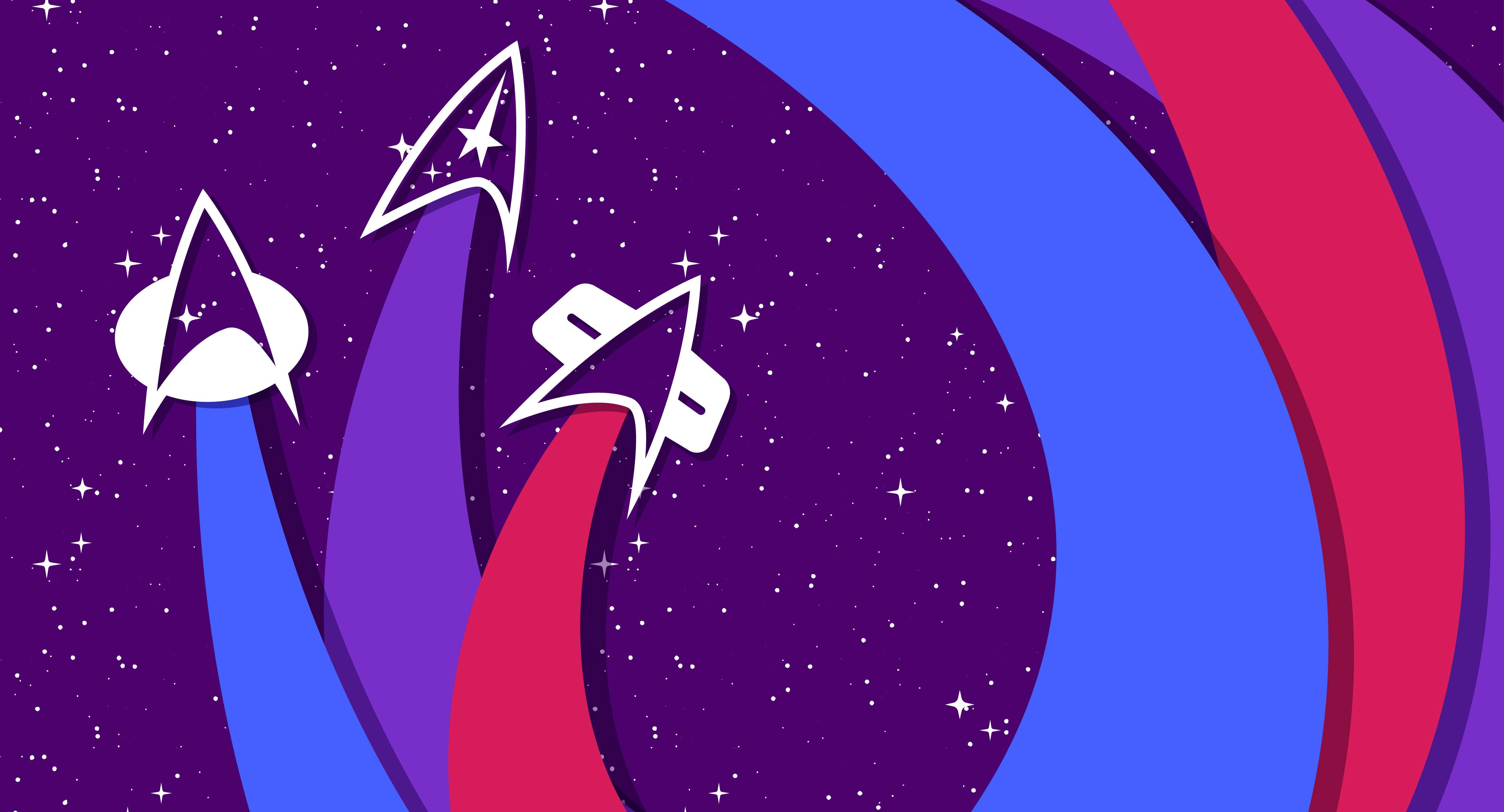
StarTrek.com / Rob DeHart
With Valentine's Day this week, we’re celebrating love in all the forms it takes throughout the quadrants. L(ove)LAP?
In the summer of 2006, I was about to enter high school, and I was, in one word, confused. I was the kind of person who always compared myself against what I saw in TV and movies, but those stories didn’t fit me or help me explain who I was, as a bisexual kid who also struggled with a learning disability. Neither of those things were being talked about on TV. I wouldn’t even hear the word “bisexual” until Katy Perry’s “I Kissed a Girl” hit the music charts in 2008, and that just made things more confusing. I was continually comparing myself to “normal” humans, wondering why I couldn’t do certain things, why talking to both boys and girls made me flustered, and why I felt so strongly all of the time without knowing how or why I felt that way.
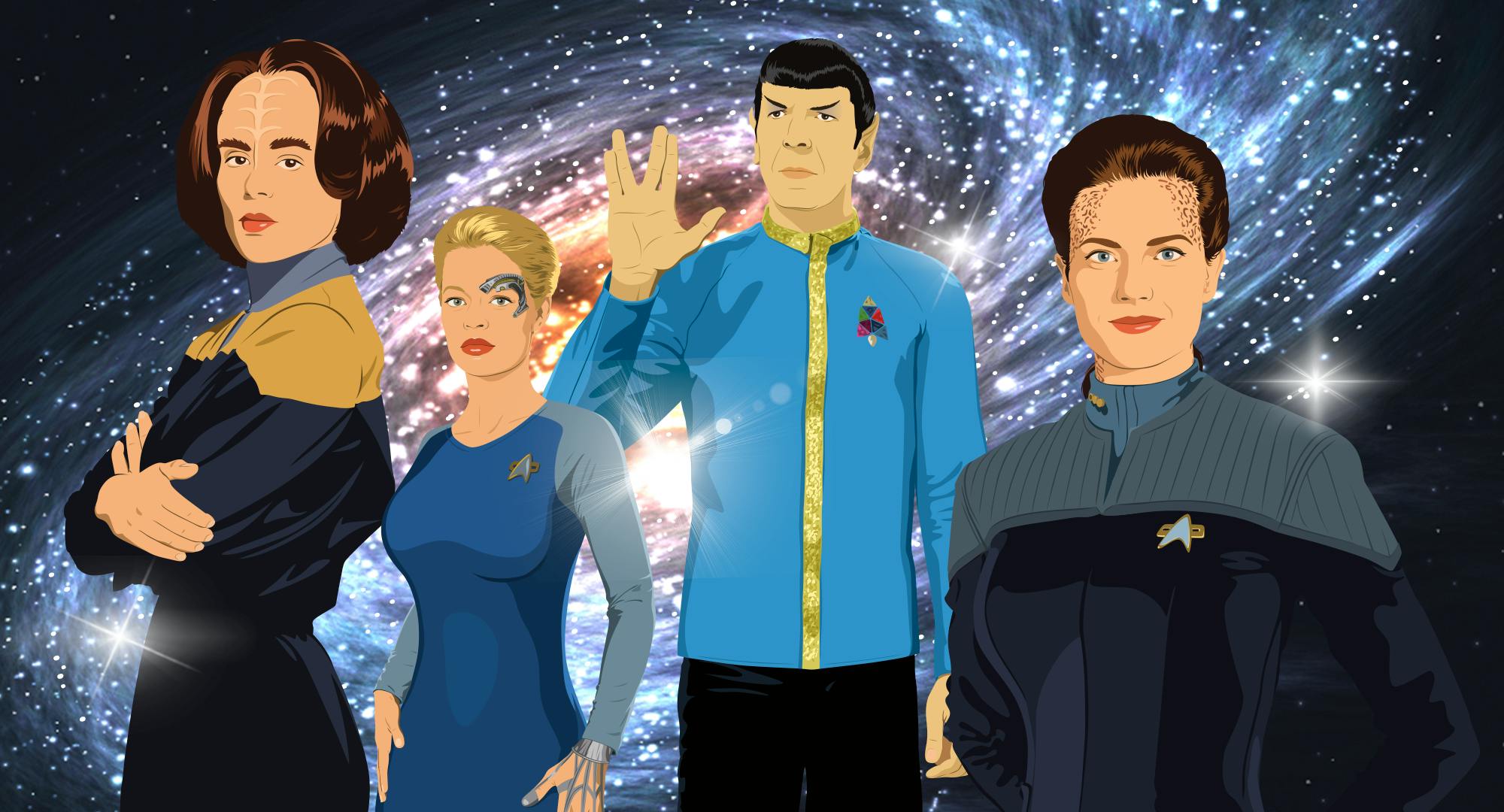
StarTrek.com
Star Trek is often centered around metaphors, with episodes that tell exciting stories while also provoking compelling discussions. When I fell in love with Star Trek that summer, it was, in part, because it started to give me tools to understand myself. Star Trek is full of characters — starring characters — who are different in the way that I felt different. And as I came to terms with my bisexuality and with the concept of love, those characters have given me the words and tools to know who I was, what I wanted, how to move forward. In each step of my journey, I’ve had a different character who spoke to me and helped me learn more about the person I knew I wanted to be.
Julian Bashir
Self Acceptance and Representation
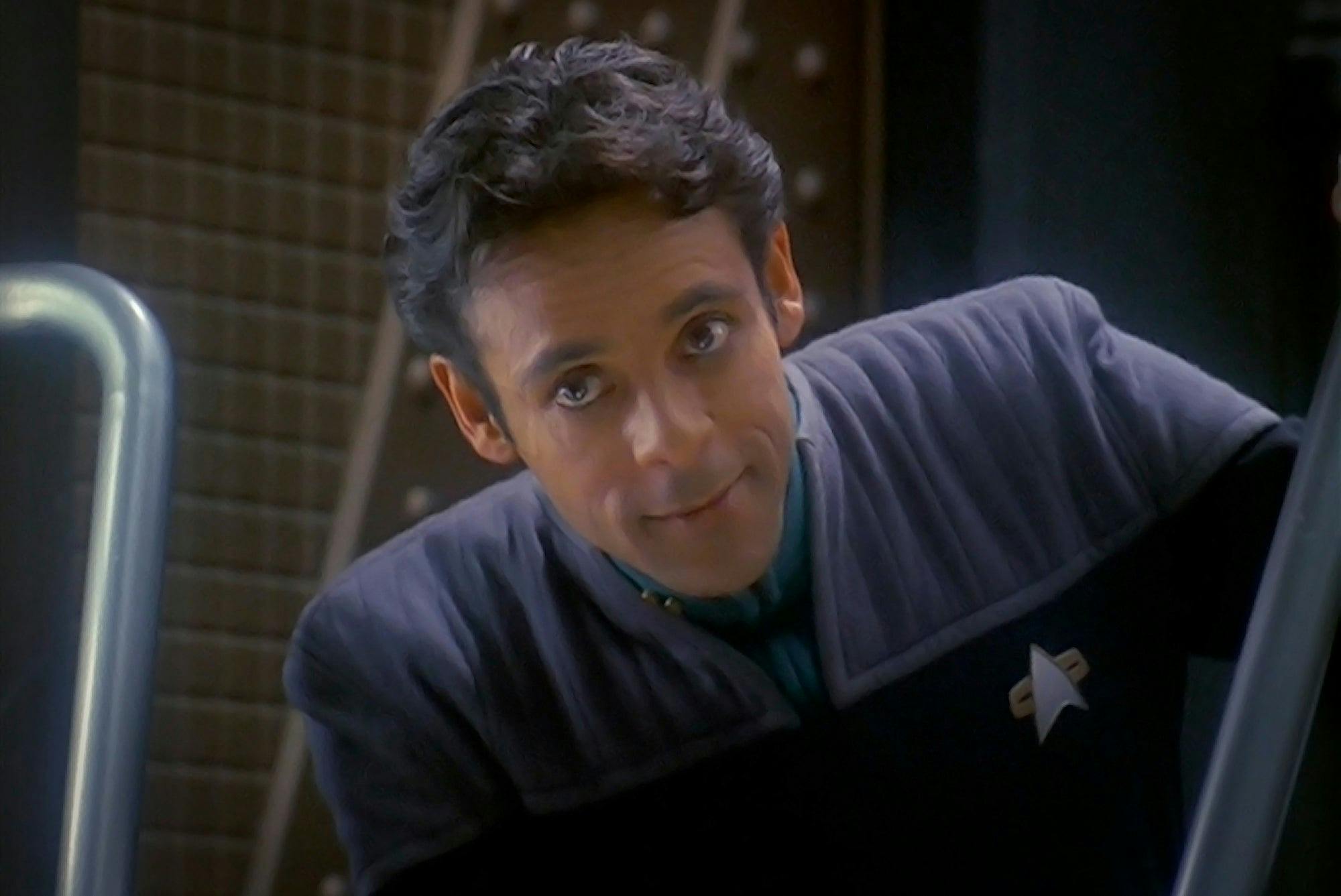
StarTrek.com
Dr. Julian Bashir is my favorite Star Trek character. What’s not to love about a character who shows up on Risa in a velour tank top and clashing harem pants? I relate to him on several levels; he’s an adult who sleeps with a stuffed animal. He had a learning disability as a child. He thinks James Bond is cool. Fully fleshed out and idiosyncratic with feelings and personal faults to deal with, Julian feels more well rounded than some of his contemporaneous Starfleet officers. But, ultimately, he is a happy, valued member of Deep Space 9, one of the heroes of the story.
When we compare ourselves to other people, we often see their traits positively and our own negatively. It’s easier to assume that other people are better than you, that their differences are fun and cool, and that yours are kind of lame and embarrassing. In Julian Bashir, though, I could see myself in my favorite show. Maybe normal was fine, but so were people like me. We were the heroes, too. In Bashir, I was able to start seeing and challenging the assumptions I made about myself and others. Like, for example, my assumption that I was straight, or that it would be weird if I wasn’t. Julian Bashir was my first lesson in self-acceptance.
Jadzia Dax
Pride

startrek.com
Considering that she’s had both wives and husbands, and we had the chance to see her kiss both men and Lenara Khan on Star Trek: Deep Space Nine, Jadzia Dax may be the most obvious addition to this list. In a way, she’s an ideal queer character — confident, can party with anyone, and she seems to view gender norms as something that happen to other people.
When I think of what “pride” means to me, I think of Jadzia. She is not perfect, but she is fun, wise, and incredibly fearless. She regularly stakes everything on love — not just with Lenara in “Rejoined,” or by marrying Worf. Even in “Meridian,” where Jadzia falls for a man whose planet only appears in physical space for 12 days every 60 years, Jadzia is unafraid to boldly go into the unknown, in love and in life.
B’Elanna Torres and Seven of Nine
Personal Identity
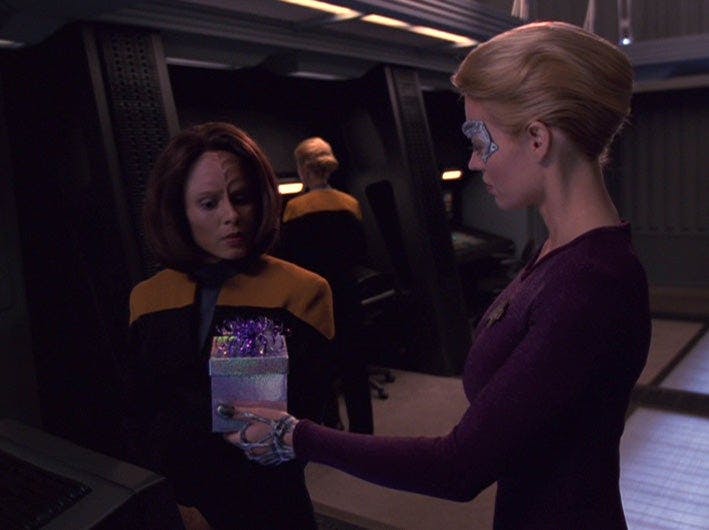
StarTrek.com
Bisexual people are often subject to the stereotypical assumption that we’re simply experimenting with our relationships before deciding whether or not we’re just gay or just straight. When I began navigating my own bisexual identity, I had a crisis over whether dating a man would undermine my bisexuality. Did seeing a man make me less bisexual, and did my bisexuality even matter if I ended up with a man in the end? Was I bisexual “enough”?
B’Elanna often deals with these feelings of insecurity, fighting fears that others will find her too aggressive, too alien, not human enough. In contrast, Seven of Nine is fiercely proud of how she is different, and instead has to come to admit her weaknesses and see the strengths in her humanity. They both depict pieces of the same idea, to me, which is that personal identity is never all one thing. Both women have to forge paths forward that reconcile both sides of themselves, as well as learning that there are more things that define them. They show that the only path forward is the one you make yourself, with enough room for every part of you.
Spock
Take Your Time
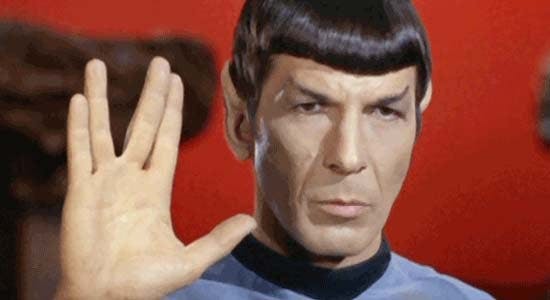
StarTrek.com
In Star Trek: The Original Series, many of Spock’s storylines are about how his inner conflict. Whether it’s bigotry, estranged parents, or his love life, his Vulcan and human sides are incompatible, and he never finds a good solution to his inner turmoil. As an older man, however, in the Star Trek films, we get to see a Spock who gets to move past that definition. In Star Trek: The Motion Picture, Spock attempts to truly remove his human side with the Kolinahr ritual, only to fail. Later, when Spock mind melds with the V’Ger probe, experiencing the life of something truly without feeling, he states that he has taken “simple feeling” for granted, because he hadn’t known what it meant to truly be without it. Throughout the films, we see Spock struggle less and less with dividing himself into two halves. Instead, he combines his two sides more and more. In Star Trek VI: The Undiscovered Country, Spock tells Valeris that “logic is the beginning of wisdom,” and talks to her about faith, talking about them as compatible ideas.
Spock’s personal conflict, and the way he finally comes to terms with it as an older man, echoes a very similar journey many LGBTQ people take. We also often face bigotry, parents becoming estranged, and complications in our love lives, and many of us are adults before we can finally come to terms with our identities. When I think about how long it took me to realize I wasn’t straight, I sometimes feel embarrassed; shouldn’t I have figured it out sooner? But the reality is that each of our journeys takes as much time as it takes. Luckily, most of us won’t have to die and get resurrected by the Genesis planet while we figure things out.
Dathon
Labels
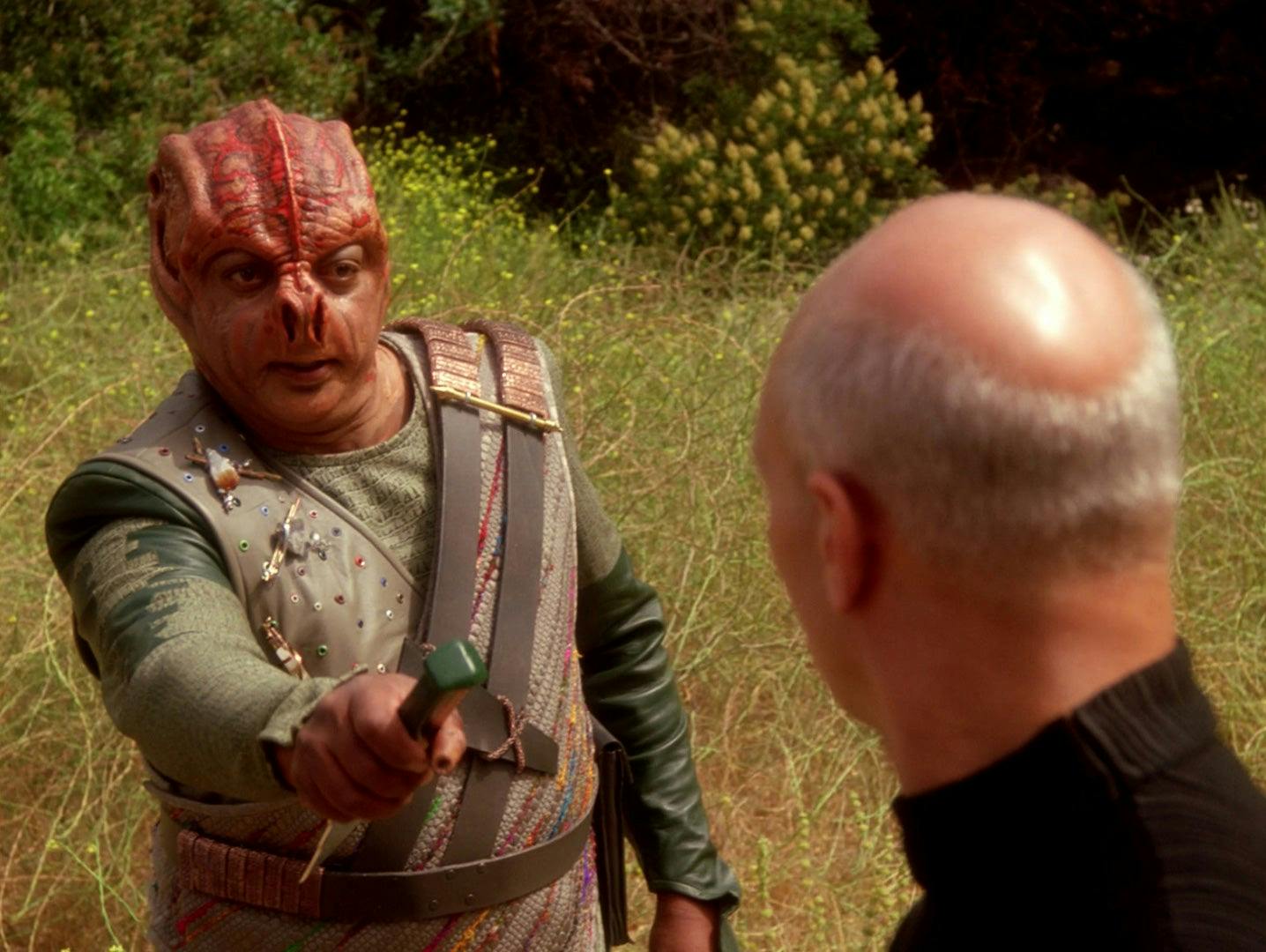
StarTrek.com
The Tamarian captain from Star Trek: The Next Generation’s “Darmok” may have only appeared once, but Dathon is always a good character to circle back to. As a young freshman, I didn’t have the words or context to understand myself or my bisexuality. Issues of mental health were discussed very rarely in my life; sexual orientation was only spoken about in the context of gay marriage, and I heard nothing about other LGBTQ.
In a way, the Star Trek characters I related to were my own Tamarian metaphors, deeply meaningful to me because they seemed to explain something that I didn’t have real words for. I would eventually find the words for who I was, and have a chance to grow and define myself. If I were to offer my own Tamarian metaphor, I might say, “Picard and Dathon at the campfire.” In “Darmok,” Captain Picard tells Dathon the story of the epic of Gilgamesh while they sit next to a roaring campfire. The story allows Picard and Dathon to deepen their understanding, to connect with each other on a deeper level. It’s a story that lets them understand something about their situation — in the same way that so many stories in Star Trek have helped me to deepen my understanding of myself.
Steamy Star Trek Moments That Made Us Fall In Love
This article was originally published on February 14, 2020.
Cindy Massre is based out of Florida, where she works with public libraries and nerds out on the regular. Cindy talks about Spock on Twitter @yipp33kiyay.
Stay tuned to StarTrek.com for more details! And be sure to follow @StarTrek on Facebook, Twitter, and Instagram.

